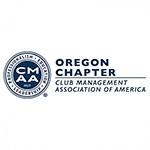Handicap Hub: The Other 75 Percent - Part II
By Kelly Neely, Sr. Dir., Handicapping & Course Rating
Click Here for Handicap Hub Archives
If you’ve been reading my recent Handicap Hub series (this is the third and last installment – I can almost hear a collective sigh of relief) you’ve discovered that the World Handicap System is a little bit about complicated formulas but a lot more about humans.
Is this the time to point out that flaws are found more often in humans than formulas? We’ll let that pass.
Because I’m the unrelenting type I promise that as long I am writing these articles, I will keep up the feeble attempts at humor sprinkled with the occasional big word to trick you into believing handicapping might not be as boring as you first thought. Is it possible – wait for it – that this subject could be a “boredom buster?” Maybe. But it could also be that you’ve turned to reading Handicap Hub in a desperate search for something to do. After all, you can’t play golf 24/7. Well, you could but that would involve a lot of stadium lights and then it would be baseball.
Last month we covered the role within the World Handicap System of the Most Important Human – the Golfer. This month, let’s target a few more accomplices – I mean, Other Important Humans. The focus of this article will be the folks at your golf club and golf associations like the OGA (not to leave the USGA out of the mix, but I think we already know their role as Grand Poohbah).
It’s important to note that many of the rights and responsibilities of the stakeholders, as stated in the Rules of Handicapping, are shared. Handicapping is not a one-man show, rather is a well-crafted collaboration.
THE GOLF CLUB / HANDICAP COMMITTEE
-
The Golf Club must establish a Handicap Committee and support structure to ensure the World Handicap System is properly administered and the system’s integrity is protected.
Not only must every golf club wishing to provide Handicap Indexes to their members form an oversight Committee, this Committee cannot hope to fulfill their role without the backing of the membership and club officers. The Golf Professional and club management must also lend their nod of approval to the Committee’s goals and actions. All the cogs in this wheel play an important part in determining whether that wheel turns smoothly or goes off the rails.
While it’s usually just the Handicap Chair (and often the Co-Chair) who takes a deep dive into the Rules of Handicapping and goes through a mandatory certification process, a culture of cooperation and respect for the system and the integrity of every single handicap at the club must be cultivated by all parties. Handicapping will not be what it should be – a guidepost of equity – if it is ignored, mocked or manipulated. As well, if the system is not applied uniformly, it will unequivocally break down.
At the end of the day, we need strong, knowledgeable Committees dedicated to pulling off a balancing act and who will don a couple of hats. This is no small feat. Speaking of hats, this is an appropriate time to tip mine to all of our OGA Handicap Committees – you have been asked (sometimes you happily volunteer – go figure!) and are willing – to step up into positions that can be difficult, controversial and might render you unpopular at the club. Much. Respect.

-
The Handicap Committee must ensure delegated stakeholders are fulfilling their responsibilities and must establish procedures to follow when a delegated stakeholder is not doing so.
Since the Committee exists to ensure compliance with the Rules of Handicapping, policies and procedures need to be clearly outlined to the membership in writing. Expectations should be high and transparent. If we fail to provide details to the player what is expected of them, how can we hope for cooperation? As pointed out in last month’s Handicap Hub spotlighting The Golfer, there is more to this whole thing than the player just passively posting scores and waiting for a handicap to appear:
What makes a score acceptable? What makes a score unacceptable? In what timeframe must the score be posted? How do I post my score when I don’t finish a hole or a round? What is peer review? Who do I go to with a handicapping problem? What happens if I don’t post a score? If I get injured, can I get an adjustment to my Handicap Index?
Good questions! (One can always count on handicapping to raise more than a few). All of these can, and should, be easily covered in a handicapping policy. And most importantly, you will likely see these strong words, “A player must earn a Handicap Index. No player has an inherent right to a Handicap Index without demonstrating ability to our Golf Club’s Handicap Committee.” This statement may surprise some, who believe they are simply purchasing a Handicap Index when they sign up.
Though much is on the player with handicapping, the Committee in turn must don those hats I spoke of and provide education and guidance to the membership, while also doing tasks that are not quite as delightful. My best advice to the Committee is to hammer the golfer with handicap education so you don’t have to hammer them with the other hammer.
-
I’ll just call this section Penalties, Adjustments and Withdrawals, oh my.
As I just spoke of transparency within a handicapping policy, I must also be transparent in writing this article and stress that a Committee must be willing to –
1) Apply any applicable penalty score to a player’s scoring record and advise the player of any applied adjustment.
2) Adjust or withdraw the Handicap Index of a player whose Handicap Index no longer reflects their demonstrated ability, who fails to meet their responsibilities under the Rules of Handicapping, and / or whose actions are determined to be for the purpose of gaining an unfair advantage.
As you can imagine, these can be challenging tasks for a Handicap Committee who are also trying to enjoy their golf games and might not relish being snubbed by their fellow members. But, these responsibilities do come with the territory. The best Committee is proactive and accepts that they will likely, at some point, face a problem with a player’s Index. Didn’t your Dad tell you to plan for the worst, and hope for the best? Well, that’s the appropriate path for the Committee. Yep, there is some work involved and here’s a sample:
Regularly audit rounds played vs. scores posted and decide what course of action will be taken when you discover scores are missing. Will it be the ole “Three Strikes You’re Out” protocol? First failure to post or potential manipulation of the player’s score will result in a verbal warning. Second failure will result in a written warning. Third failure will result in the appropriate penalty score issued for scores not posted. Fourth failure…..the player must write out 500 times “I WILL post my scores.” Or maybe possible banishment from the Kingdom.
While we all like to believe that this is the utopian world of golf where things are beautiful and green and birds are singing, if members bring factual complaints to the Committee – multiple ones at that – the Committee cannot turn their collective head and bury it in the nearest neatly raked bunker. A proactive plan will prepare the Committee in advance and make dealing with any unpleasantness far less unpleasant.
THE REGIONAL GOLF ASSOCIATION – A.K.A., THE OREGON GOLF ASSSOCIATION
-
Provide continuing handicap education.
Every year – sadly, The Year of Covid is an exception – I conduct WHS seminars to Handicap Committees at various locations around the state. Even in future years when the Rules of Handicapping do not undergo any Rules changes, this annual schedule of seminars will be offered. Live sessions are always the best way to learn, review and present material, as the very nature of handicapping raises immediate questions leading to interactive Q&A (and the occasional lively debate). Because I ask everyone for their rapt attention for an amusing yet grueling 4-5 hours, it’s worth noting that free food is provided to ease the pain. This serves as a bribe to garner high attendance.
The OGA also provides handicap education in the form of web pages, a monthly eNewsletter to Handicap Chairs, and annual Handicapping Packets to clubs. And though it might be wishful thinking, I’m hoping that some will view my Handicap Hub articles as providing a degree of education that might be a tad more palatable than reading the Rules of Handicapping manual (and it might be WAY more palatable than reading the Rules of Golf).
-
Ensure that all facilities approved by the OGA for handicap purposes have a Course Rating and Slope Rating for all applicable sets of tees, determined in accordance with the Course Rating System.
The Golf Association is the sole entity responsible to rate golf courses and provide accurate Course Ratings and Slope Ratings to facilities in their jurisdiction. Oregon and Southwest Washington make up the OGA region, and nearly every golf course in this area (totaling 190+) has official ratings. Technically, the only ones without published ratings are those courses who do not have an OGA member club or are shorter than regulation length – which is 3000 yards for 18 holes, or 1500 for nine.
Course Rating Manager, Gretchen Yoder, first begins with a thorough measuring process. Meticulous measurements are derived by way of either our fancy-schmancy GPS unit or laser, both of which are more accurate than what is found in retail golf equipment. Because Gretchen is not the Uni-Rater, she has a Rating Team numbering about 25 highly trained, dedicated volunteers who have developed furrowed brows from the painstaking work and are rain-soaked half the time.
While the USGA requires Golf Associations to rate courses in their region once every 10 years, the OGA completes full rates on an accelerated 7-year cycle to account for – yes, Trees (they’re not only big in our neck of the woods, they grow fast). Exceptions to the normal schedule are Bandon courses, as maintaining the 7-year rotation would be impossible there. Additional rating adjustments may be provided in between, depending on the circumstance.
-
Establish the start and end dates of any inactive season within areas of its jurisdiction.
Since the northern half of the country experiences different weather patterns than the southern half, the OGA has determined that the dates of our inactive season are best set within the parameters of December through February. While not a perfect science by any means, setting this inactive season simply pinpoints the most likely months where inclement weather creates deteriorating course conditions over much of our large geographic area. Prolonged, poor course conditions can wreak havoc with Course Ratings, rendering them imprecise.
Sorry, but this means that even when you are enjoying a rare, no-wind 60-degree day at the Oregon Coast in mid-January, you still cannot post that score.
And those shared responsibilities I alluded to earlier? Both the Golf Club and the Handicap Committee work together to maintain comprehensive, up-to-date GHIN scoring records, ensure those records are available to others, work through a myriad of tech support conundrums with the GHIN system, are involved in the determination of Stroke Index Allocation and Par, and even may settle disputes or doubtful points referring to the Rules of Handicapping.
Though it sounds like a barrel o’ fun, I can’t expound on that last one because I’m at the end of the page. Lucky me! And lucky you.
Questions? Contact Kelly or Gretchen in the OGA Handicapping & Course Rating Department at (503) 981-4653 x226 or Click Here to Email Your Question








